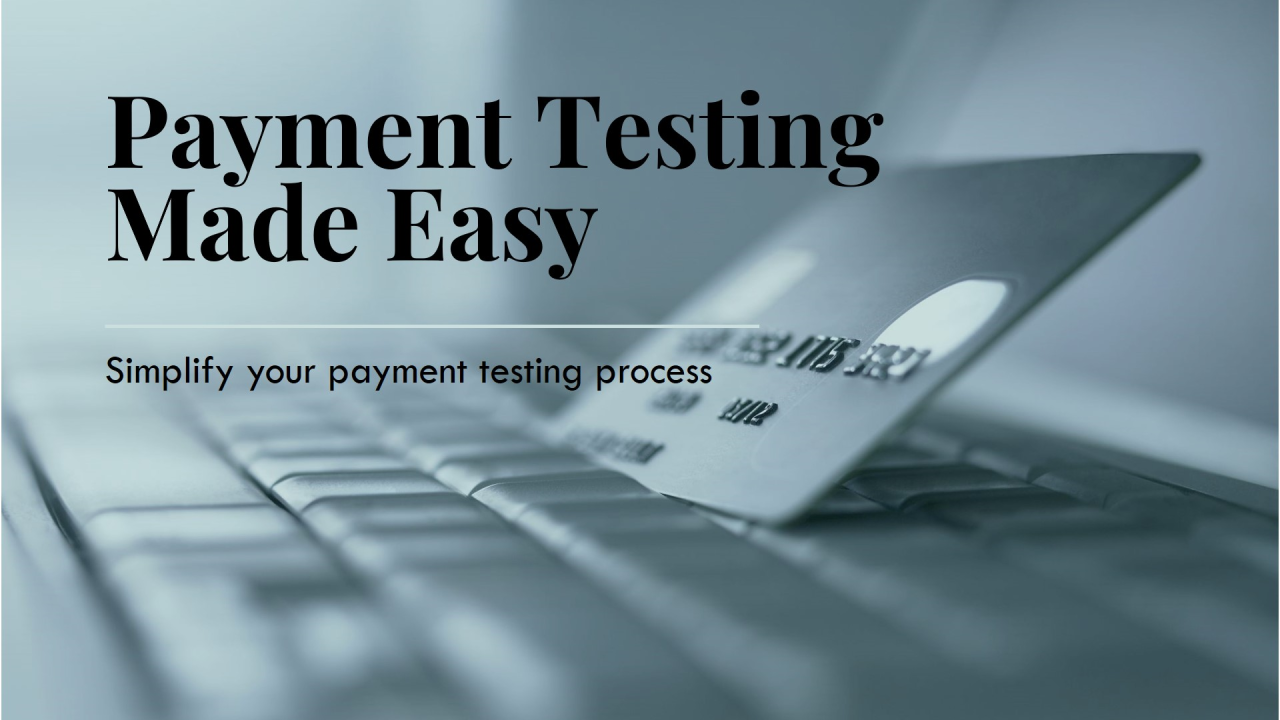Getting Started with Payments Testing: A Guide to Ensure Seamless Transactions

In today's digital economy, payment systems are the backbone of business operations. Whether you're developing a new e-commerce platform, integrating with a payment gateway, or updating an existing financial system, thorough testing is essential to ensure reliable and secure transactions. This guide provides a comprehensive approach to payments testing, covering methodologies, best practices, and strategies to ensure your payment systems function flawlessly.
Understanding the Payment Ecosystem
Before diving into testing strategies, it's crucial to understand the complex ecosystem of payment processing:
- Payment Gateways: Services that authorize credit card payments for online and in-person retailers
- Payment Processors: Companies that handle transactions between merchants and customer banks
- Acquiring Banks: Financial institutions that process payments on behalf of merchants
- Card Networks: Companies like Visa, Mastercard, and American Express that facilitate transactions
- Issuing Banks: Financial institutions that provide payment cards to consumers
Essential Payment Testing Types
1. Functional Testing
Functional testing verifies that each component of the payment system works as expected:
- Payment authorization and capture
- Refunds and chargebacks
- Recurring payments and subscriptions
- Payment method validation
- Currency conversion
- Tax calculation
2. Integration Testing
Integration testing ensures that your payment system works correctly with all external services:
- Payment gateway connections
- Third-party processor integrations
- Banking system interfaces
- Accounting software integration
3. Security Testing
Security testing is critical for payment systems to protect sensitive financial data:
- PCI DSS compliance verification
- Encryption and tokenization testing
- Vulnerability assessments
- Penetration testing
- Authentication and authorization testing
4. Performance Testing
Performance testing ensures your payment system can handle expected transaction volumes:
- Load testing for peak transaction periods
- Stress testing to identify breaking points
- Latency testing for transaction processing times
- Scalability testing
5. Negative Testing
Negative testing verifies that your system handles errors and edge cases appropriately:
- Declined transactions
- Insufficient funds scenarios
- Network timeouts
- Invalid card details
- Fraud detection triggers
Best Practices for Payment Testing
Use Sandbox Environments
Most payment providers offer sandbox or test environments that simulate the production environment without processing actual financial transactions. Always start testing in these environments before moving to production.
Test with Real Payment Methods
While test cards are useful, eventually testing with real payment methods in a controlled environment provides the most accurate results. This is especially important for testing the full payment flow, including bank statements and notifications.
Implement Comprehensive Test Data
Create test cases that cover various scenarios:
- Different card types (credit, debit, prepaid)
- Various card networks (Visa, Mastercard, Amex, etc.)
- International payments and multiple currencies
- Different payment amounts (including very small and very large)
Automate Regression Testing
Payment systems require frequent updates due to changing regulations and security requirements. Automated regression testing ensures that new changes don't break existing functionality.
Monitor and Log Everything
Comprehensive logging is essential for troubleshooting payment issues. Implement detailed logging for all payment transactions while ensuring compliance with data protection regulations.
Common Challenges in Payment Testing
Testing 3D Secure Authentication
3D Secure adds an additional authentication layer to online card transactions. Testing this flow can be challenging as it involves redirects to the issuing bank's authentication page. Most payment gateways provide specific test cards that simulate different 3D Secure scenarios.
Testing Webhooks and Notifications
Payment systems often use webhooks to notify your application about events like successful payments or refunds. Testing these asynchronous communications requires tools that can receive and validate webhook calls.
Testing Payment Failures
It's crucial to test how your system handles payment failures, including graceful error messages to users and appropriate retry mechanisms. Payment providers typically offer test card numbers that trigger specific failure responses.
Tools for Payment Testing
API Testing Tools
Tools like Postman, SoapUI, or JMeter can help test payment APIs directly, allowing you to validate request and response formats, error handling, and performance.
Mock Payment Services
Services like Stripe's mock server or PayPal's mock API allow you to simulate payment scenarios without connecting to actual payment networks.
Webhook Testing Tools
Tools like Webhook.site or RequestBin help capture and inspect webhook calls from payment providers during testing.
Conclusion
Thorough payment testing is not just a technical requirement—it's a business necessity. A single payment failure can lead to lost revenue, damaged customer trust, and potential compliance issues. By implementing a comprehensive testing strategy that covers functionality, security, performance, and edge cases, you can ensure that your payment systems provide a seamless and secure experience for your customers.
Remember that payment testing is not a one-time activity but an ongoing process. As payment technologies evolve and new security threats emerge, regular testing helps maintain the integrity and reliability of your payment systems.